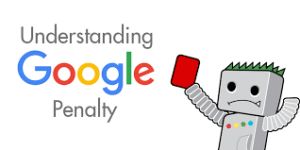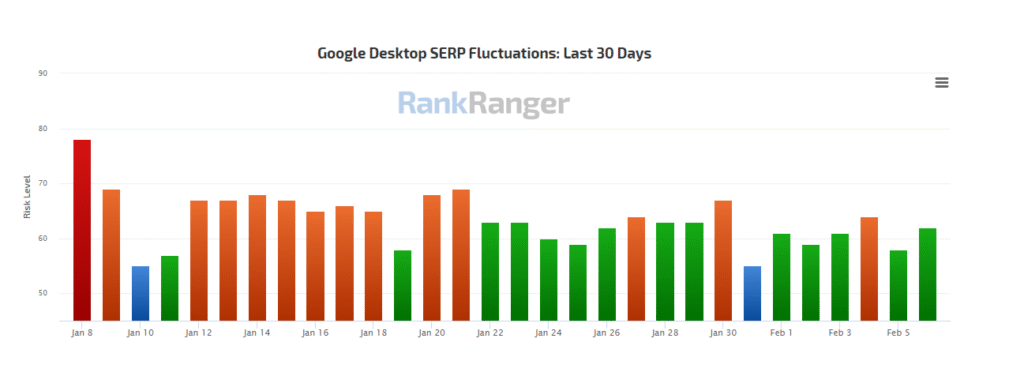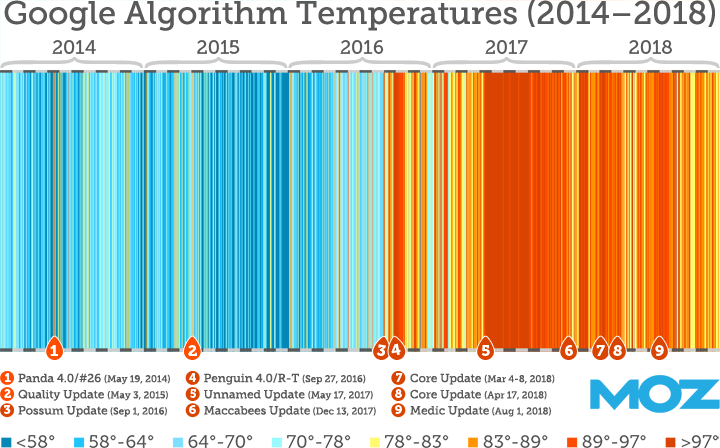How do you avoid a Google penalty?
Everyone aims for their website to rank at the very top of Google search results, but achieving this is a completely different challenge compared to standard marketing efforts. Mastering the art of search engine optimisation often feels like casting powerful spells—almost like wizardry. Fortunately, we’ve mastered all the right techniques to deliver truly exceptional results that stand out from the crowd.

The challenge with attempting to achieve these results on your own is the risk of incurring Google SEO penalties against your website, often because you might not fully understand how to develop effective strategies that won’t “irritate” Google’s algorithms as outlined in their official SEO guidelines.. SEO is becoming increasingly complex, making it essential to work with an expert who can guide you to higher rankings while ensuring your site stays penalty-free.
While there are alternative search engines, Google dominates the market with over 90% share, which explains why most businesses focus their efforts on climbing the organic search rankings there.
There are various ways to improve your ranking, some of which are more ethical than others—something Google’s algorithms are very good at detecting. Their web crawlers meticulously review every website, and if they find that you’re using questionable or unethical tactics to climb the rankings, your site will face penalties.
Such penalties drastically reduce your chances of appearing at the top or even on the first page of search results. This is a serious issue given that only about 6% of users click through to the second page of Google results.
Fortunately, there are many legitimate strategies to improve your Google ranking, collectively known as search engine optimisation (SEO). We’ll dive into the right methods to use, as well as the pitfalls to avoid, helping you steer clear of penalties and boost your site’s visibility.
How to Avoid Google Penalties?

Create a Solid SEO Strategy
Optimising your online content so that Google prefers your website when matching search queries to results is key. Google has earned its position as the global leader because it strives to deliver the best possible results to users. It uses artificial intelligence in web crawlers and sophisticated algorithms to ensure this happens every single time. Here are some ways to impress Google’s algorithms and web crawlers through SEO:
Content
Google openly states it favours websites with high-quality, relevant content. This is especially true for sites that regularly update with fresh, original, and valuable content. Publishing blogs, articles, videos, eBooks, white papers, or any content relevant to your industry that adds value to your audience is a powerful way to boost your Google ranking organically.
User Experience
This means examining your website’s underlying HTML code to guarantee users have the best possible experience. Your site should load quickly, be mobile-friendly, easy to read, and have all links functioning correctly and directing users where they intend to go. Beyond aesthetics, you need to eliminate any unnecessary code that could slow your site down. Think of your website like a car—it needs regular maintenance. Schedule at least an annual review to keep your site fully optimised.
Social Media
Leverage platforms such as Facebook, LinkedIn, and Twitter to share your content and attract more visitors to your site. Google tends to reward websites that generate higher traffic, especially those supported by strong social media engagement.
These are all examples of white hat SEO strategies, meaning you can implement them confidently without worrying about penalties from Google.
The Different Types of Google Penalties
Google penalties typically come into play when you use black hat SEO tactics. So, what exactly are black hat SEO strategies? These are practices that violate Google’s guidelines and can harm your site’s ranking, such as:
Buying Links
While inbound and outbound links from reputable websites can boost your SEO, purchasing or selling links is against Google’s rules and will result in link penalties.

Cloaking
This involves showing one version of content to users but a different one to search engines in an attempt to deceive them.
Content Automation
Using AI or other software to automatically generate content stuffed with relevant keywords is strongly discouraged by Google.
Copying Content
Plagiarising content from other sites is not only unethical but also a quick way to get penalised. Google can easily detect duplicate content, including copying content from one section of your own website and repeating it elsewhere.
Doorway Pages
These are pages designed with keywords that attract Google’s attention but redirect visitors to a completely different URL.
Hidden Text or Links
Trying to hide keywords or links by making them invisible—such as using font size zero or white text on a white background—is a tactic that will get your site penalised.
Keyword Stuffing
There’s no exact limit on keyword usage, but content must remain natural and readable. For example, a sentence like “Buy your running shoes from the running shoe experts Mike’s Running Shoes” is a clear case of keyword stuffing. Does your content read like this?

Link Spamming
External links should be relevant and meaningful. Adding excessive links that lead to unrelated or low-quality sites won’t help your SEO and can hurt your rankings.
Over-Optimising HTML Headings
Each page should have just one main header (H1). Using multiple H1 tags is considered negative SEO. It’s fine to use several H2, H3, and H4 headings, but never more than one H1 per page.
Is My Site Penalised by Google?
There are two main ways to check if Google has penalised your website. The first is through Google Search Console, where you can navigate to the ‘Security and manual actions / Manual actions’ tab—though this method has its limitations.

If your site has been penalised, your results might look like this (Source: Bruce Clay).
Google penalties come in two forms: manual penalties and algorithmic penalties. Manual penalties are imposed by real people, likely members of Google’s Quality team. If this happens, you’ll receive a detailed report explaining what went wrong, how to fix it, and you can submit a reconsideration request to have the penalty removed.
Algorithmic penalties, on the other hand, are applied automatically by Google’s AI and are far more common. These don’t show up in Google Search Console, and there’s no option to submit a reconsideration request.
To check if you’ve been hit by an automatic penalty, review your organic traffic in Google Analytics. If you notice a significant drop in organic traffic that coincides with a Google algorithm update, it’s likely your site has been penalised automatically. Unlike manual penalties, you cannot appeal; instead, you’ll need to work on regaining Google’s trust.
Think of it like being caught stealing cookies from the cookie jar. If your mother catches you, she’ll be upset and likely ban you from having cookies for a while. She’ll also watch you closely to make sure it doesn’t happen again. Google works in a similar way—your site must re-earn its trust.
By consistently applying positive SEO strategies and avoiding black hat tactics, Google will gradually regain confidence in your site, and eventually lift the penalty. However, if you get caught “with your hand in the cookie jar” again, the penalties will be much harsher and the road to recovery much longer.
How Long Do Google Penalties Last?
For manual penalties, Google will inform you of the penalty duration, and you can submit a reconsideration request after correcting the issue, which can lead to an immediate lifting of the penalty. However, algorithmic penalties are far more common and Google does not provide a timeline or appeal option for these.
The length of a penalty depends on the severity of the violation, as per Google Webmaster Guidelines. A minor issue, such as slight keyword overuse, might result in a 30-day penalty. More serious black hat SEO tactics can trigger penalties lasting three months, six months, or even up to two years. There’s no guarantee the penalty will be lifted after the stated period, especially if further violations occur.
The best course of action is to identify the likely cause of the penalty, fix it promptly, and maintain good SEO practices. In some cases, Google may lift the penalty early for sites that demonstrate consistent positive behaviour.
How Do I Stop Google Penalties?
The only surefire way to avoid Google penalties is to steer clear of any practices that could trigger them in the first place. There’s no shortcut to instantly catapult your site to the top of Google rankings—you have to put in the hard work.
Consistently producing quality, relevant, fresh, and original content will build your site’s reputation with Google over time. Following Google Webmaster Guidelines ensures you won’t face penalties as your site climbs the rankings organically.
SEO is a marathon, not a sprint. Using “performance enhancers” or black hat tricks won’t earn you the gold medal. Remember, your SEO efforts aren’t just for Google—they’re for your current and potential customers too. Providing an excellent user experience helps generate leads, conversions, and sales. High-quality content positions you as an industry leader and boosts your credibility compared to competitors.
What Google Penalty Checking Options Are Available?
Neither Google Search Console nor Google Analytics can directly confirm if you’ve been automatically penalised or how long a penalty might last. Fortunately, several third-party tools can help you gain these insights:
MOZ Algorithm Change History: Think of this as a weather report for Google’s algorithm. It highlights major updates, so you can cross-check these with dips in your Google Analytics traffic to detect penalties.

- Fruition Google Penalty Checker: This user-friendly tool uses detailed analytics like organic traffic, page views, and visitor behaviour to show when algorithm changes impact your site.
- SEMrush Sensor: Detects fluctuations in Google’s SERPs indicating algorithm changes. You can also monitor your site traffic in SEMrush to see if drops align with these updates.
- Penguin Penalty Checker: Integrates with Google Analytics to overlay your traffic history with known algorithm changes, creating a visual graph that highlights possible penalties.
- Rank Ranger Rank Risk Index: Not only alerts you to algorithm updates but also identifies risky keywords and opportunities within your SEO strategy.

